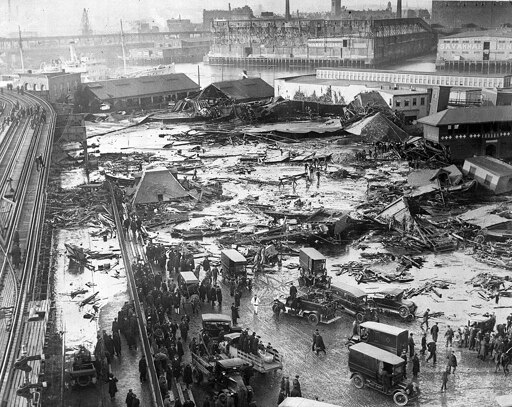The Great Molasses Flood, also known as the Boston Molasses Disaster was a disaster that occurred on Wednesday, January 15, 1919, in the North End neighborhood of Boston, Massachusetts.
A large storage tank filled with 2.3 million U.S. gallons (8,700 cubic meters) 13,000 short tons (12,000 metric tons) burst, and the resultant wave of molasses rushed through the streets at an estimated 35 miles per hour (56 kilometers per hour), killing 21 people and injuring 150. The event entered local folklore and residents reported for decades afterwards that the area still smelled of molasses on hot summer days.



Gross 🤢